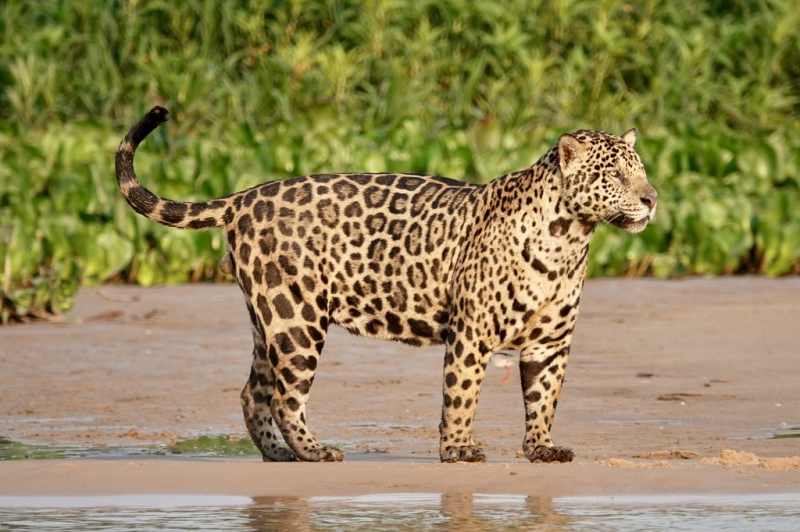The jaguar
The jaguar (Panthera onca) is a huge cat that is the only extant member of the Panthera genus that is native to the Americas. It is the largest cat species in the Americas and the third largest in the world, with a body length of up to 1.85 m (6 ft 1 in) and a weight of up to 158 kg (348 lb). Its coat is distinguished by pale yellow to tan fur covered by dots that transition to rosettes on the sides, while some individuals have a melanistic black coat. The jaguar's powerful bite allows it to pierce turtle and tortoise carapaces and use an unusual killing method: it bites through the skull of mammalian prey between the ears to deliver a lethal blow to the brain.
It can be found in a range of forested and open habitats, but it prefers tropical and subtropical moist broadleaf forests, wetlands, and woodland areas. It can swim and is primarily a solitary, opportunistic, stalk-and-ambush apex predator. It is a keystone species that helps to stabilize ecosystems and regulate prey populations.
When hunting, the jaguar uses a stalk-and-ambush method rather than chasing prey. Before charging or ambushing, the cat would leisurely travel down forest pathways, listening for and stalking prey. The jaguar attacks from cover and usually from a target's blind spot with a quick pounce; both indigenous people and field researchers regard the species' ambushing abilities as nearly unparalleled in the animal kingdom, and are most likely a result of its role as an apex predator in several different environments. The ambush could include leaping into the water after prey, as a jaguar is capable of swimming with a huge kill; its strength is such that carcasses as large as a heifer can be dragged up a tree to avoid flood levels. The jaguar will drag the remains of its prey to a thicket or other quiet location after killing it.











